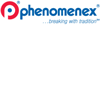New 1.3-micron Kinetex core-shell media delivers superior UHPLC performance
Posted: 15 January 2013 | | No comments yet
“The Kinetex product line spans our customers’ needs…”


Phenomenex Inc., a global leader in the research and manufacture of advanced technologies for the separation sciences, announces the addition of 1.3-micron UHPLC columns to its Kinetex core-shell product line. With the smallest diameter in the Kinetex family, the 1.3-micron is the most efficient particle on the market, delivering measurably better performance than conventional fully porous media on UHPLC equipment. The Kinetex core-shell family now includes four particle sizes, from 1.3- to 5-micron, providing separation solutions for virtually every chromatographic application and easy method transferability from UHPLC to HPLC to preparative-scale LC.
“The Kinetex product line spans our customers’ needs, from sub-2-micron UHPLC to small-scale purification, enabling everyone to take advantage of the performance and productivity gains that core-shell technology can deliver,” comments Simon Lomas, brand manager for Phenomenex.
With efficiency levels over 400,000 plates per meter, the Kinetex 1.3-micron represents a dramatic advancement in LC media technology. UHPLC users can now reach previously unavailable levels of sensitivity and performance, with the added benefit of easy method transferability and scalability to any of the three other Kinetex particle sizes. While fully porous sub-2-micron columns exhibit significant band broadening due to frictional heating as flow rate increases, the Kinetex particle morphology and packing technology help to reduce these and other effects to ensure high resolution and sensitivity over an extended linear velocity.
Phenomenex core-shell products meet researchers’ need to improve results and increase productivity with their current instrumentation. By delivering significant improvements in speed and separation power over traditional fully porous columns, Kinetex columns enable chromatographers to get superior results on any LC or UHPLC platform, along with potential reductions in solvent usage.




